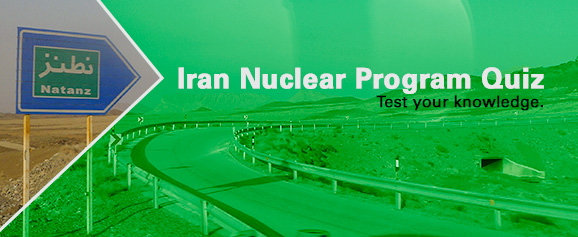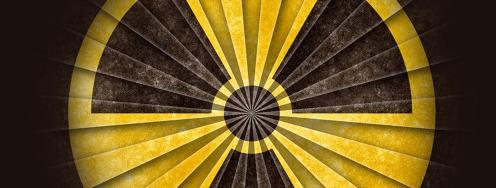Getting the Facts on Iran's Nuclear Program

How old is Iran’s nuclear program, how did it come into being, and who’s in charge? If you want to test your own knowledge of these facts, click here to take the Ploughshares Fund quiz! But if you’d rather peek at a study guide first – we’re here to help.
Americans of every political stripe are weighing the pros and cons of diplomacy right now, discussing the efforts to achieve a long-term nuclear deal between Iran and the so-called “P5+1” countries – so-called because those countries are the five Permanent Members of the UN Security Council (the US, UK, Russia, China, and France), plus Germany. Too often though, among all the talk, basic facts don’t get much attention.
From “I Like Ike” to the Islamic Republic
Iran’s path toward nuclear power actually began in 1960 under the “Atoms for Peace” plan, an American program launched by Dwight D. Eisenhower in 1953.
Soon after the 1979 Islamic Revolution, Iran was entrenched in a brutal war with Iraq; Iraq used chemical weapons (with American knowledge) as early as 1982, and Iran sought non-conventional means with which to respond. Hundreds of thousands of Iraqis and Iranians were killed in eight years of carnage, a fact that shapes politics in both countries to this day.
By the mid-1980s, Iran had gotten the technical know-how to produce centrifuges (necessary in the production of both nuclear energy and nuclear weapons) from rogue Pakistani scientist A. Q. Khan.
The Weight of Sanctions
An array of sanctions have been imposed on Iran by the international community in the meantime, including:
- the Iran-Iraq Arms Nonproliferation Act of 1992
- Executive Order 12959, President Clinton’s ban on US trade and investment in Iran (renewed under both Presidents Bush and Obama)
- the Comprehensive Iran Sanctions, Accountability, and Divestment Act of 2010
- an expansion of Executive Order 12959 by President Obama in the spring of 2013
Collectively, these and many other sanctions have had a devastating impact on Iran’s economy.
Iranian President Hassan Rouhani was elected in June 2013 on a platform of willingness to compromise on Iran’s nuclear program in return for relief from global sanctions and international isolation. Rouhani replaced outgoing President Mahmoud Ahmadinejad who had alienated much of the Iranian electorate by the time he left office, in part because of his failure to deal effectively with the economic damage caused by sanctions.
So How Many Nukes Does Iran Have?
Iran actually has no nuclear weapons, is a signatory of the Nuclear Non-Proliferation Treaty, and has long asserted that its nuclear ambitions are for domestic energy needs only. However, Iran has developed the capacity to enrich uranium, a key stage to weapons production, at two of its nuclear facilities: Fordow and Natanz. Under the terms of the six-month P5+1 interim agreement which began implementation on January 20, Fordow, Natanz and all of Iran’s nuclear facilities are now open to the International Atomic Energy Agency (IAEA) on a daily basis.
In addition to daily inspections, the interim agreement requires Iran to halt all progress on uranium enrichment and any development of nuclear building sites. Though some Westerners continue to call for US air strikes against these sites, the interim agreement forecloses this possibility for the time being. It also lifts or reduces certain sanctions for the six-month period.
Where Does The Buck Stop?
It’s important to remember, however, that President Rouhani doesn’t have the final say over Iran’s nuclear program. That power is vested in Iran’s Supreme Leader, Ayatollah Ali Khamenei. So far Khamenei has been supportive of Rouhani’s efforts, but both face opposition from Iranian conservatives who would rather not see any compromise with the West.
Now it’s time to try your luck on our quiz – go see how you do! Be sure to challenge your friends, too (and pass them this primer, if you think they might need the help).




